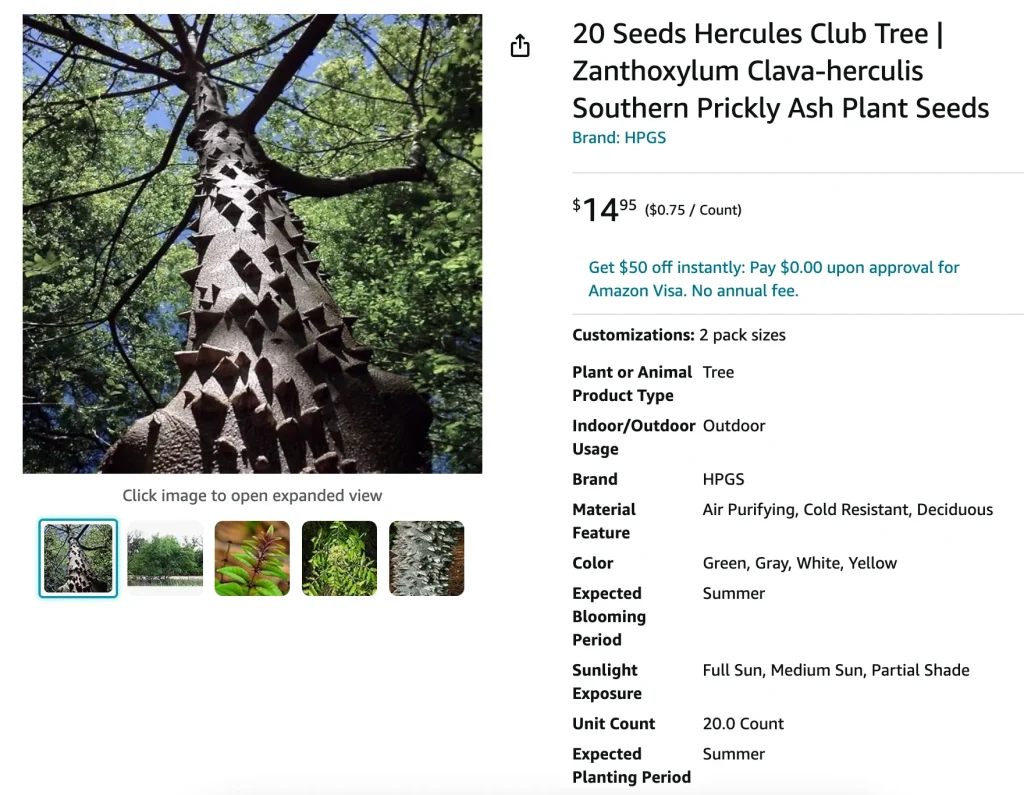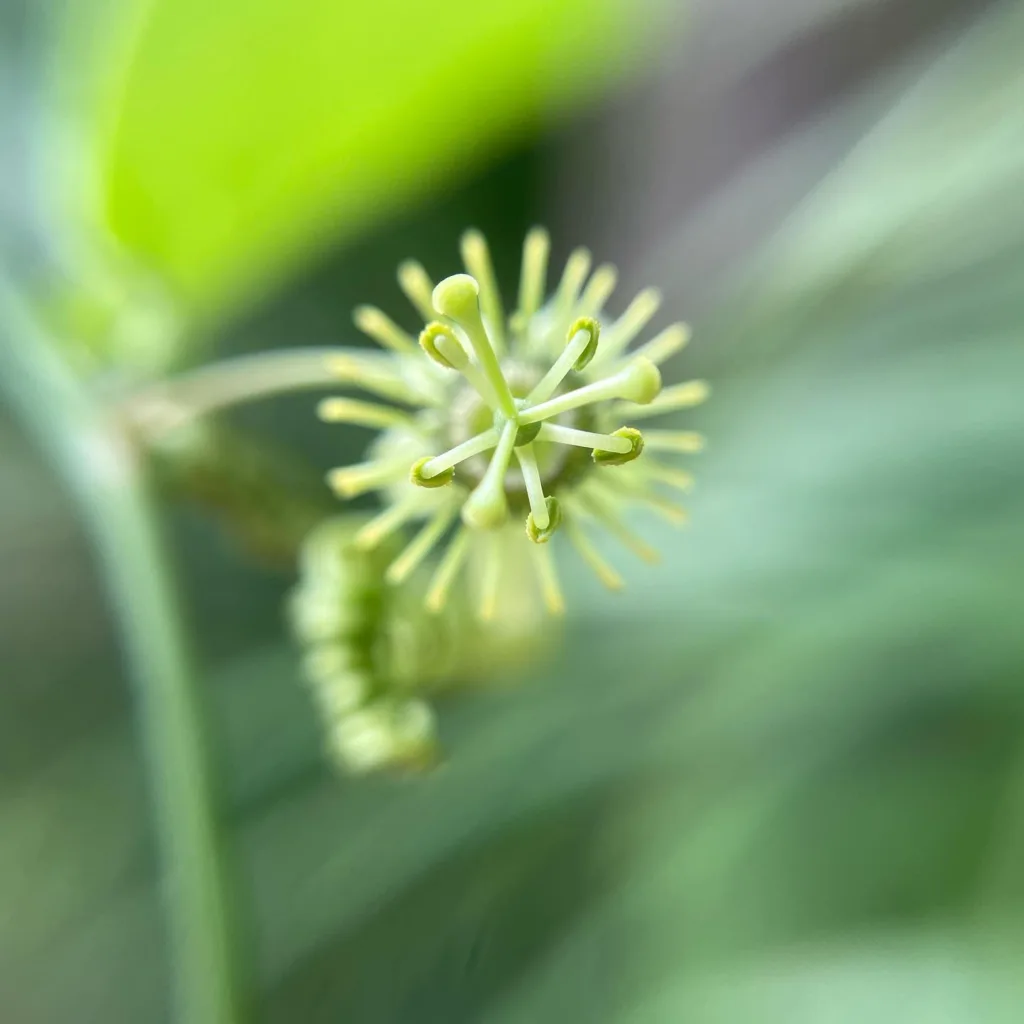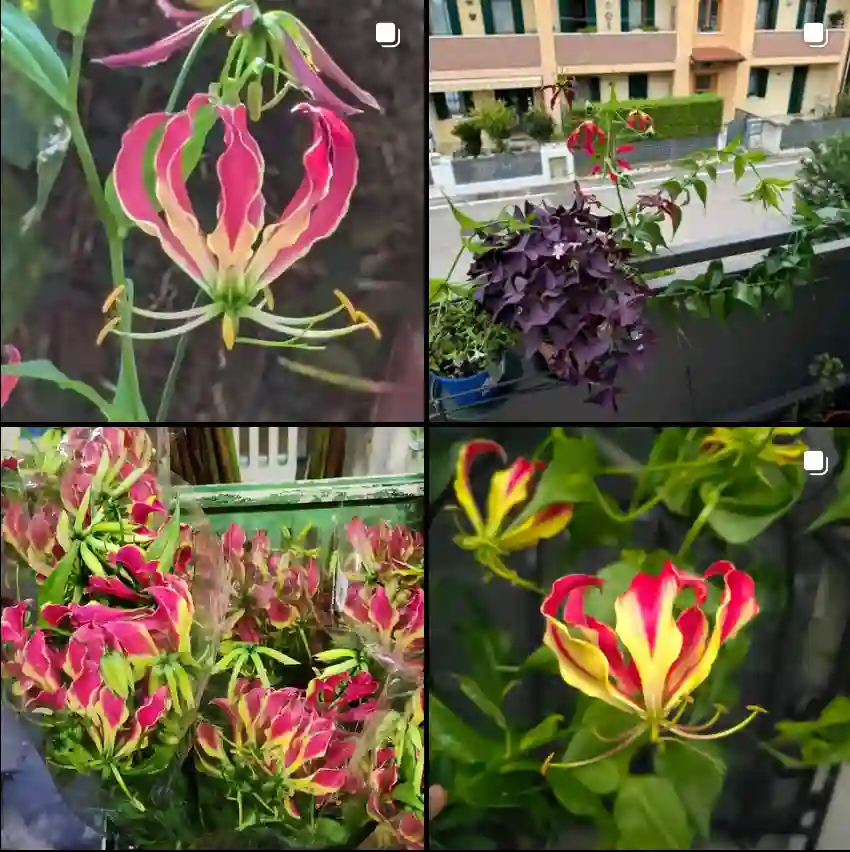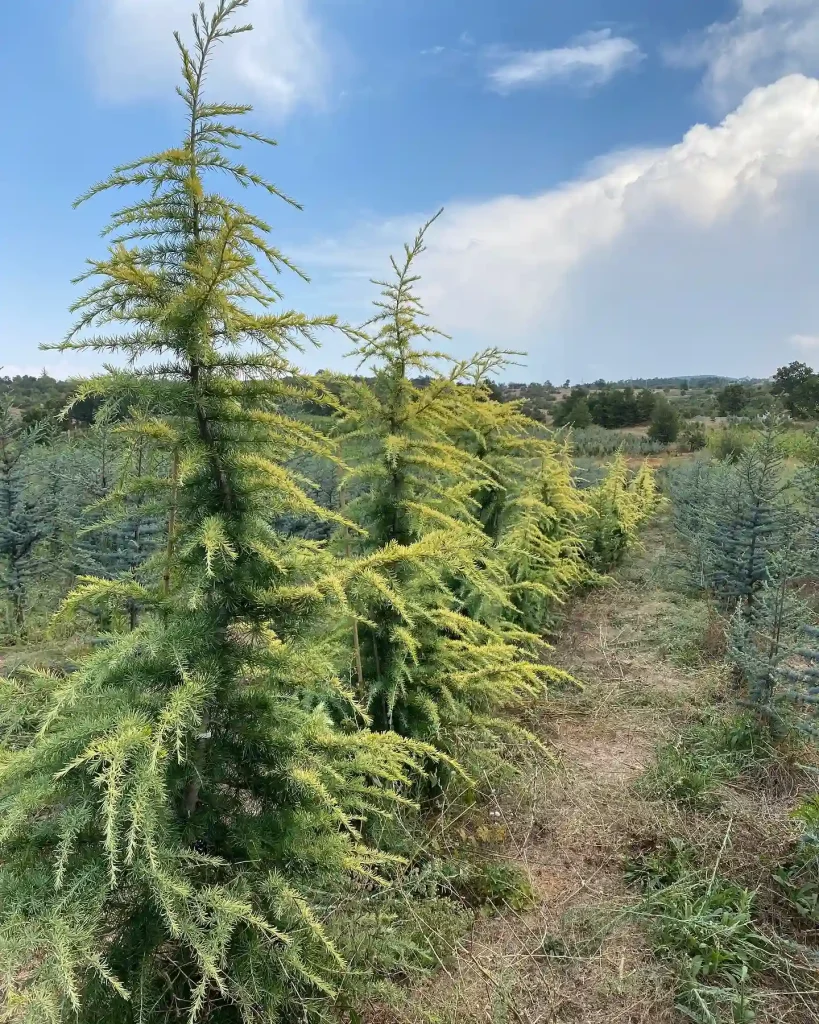
FAQs About Zanthoxylum Clava-Herculis
When I first came across Zanthoxylum Clava-Herculis, also known as the Hercules’ Club or toothache tree, I was intrigued by its unique characteristics. This fascinating tree, native to the southeastern United States, has a storied history and offers both practical benefits and aesthetic appeal in landscaping. I’ve compiled some frequently asked questions to provide insight into this tree, so let’s dive in.
234 Species in Genus Zanthoxylum
What is Zanthoxylum Clava-Herculis?
Zanthoxylum Clava-Herculis, often referred to as Hercules’ Club, is a small deciduous tree native to the southeastern U.S. It belongs to the Rutaceae family, the same group as citrus plants, which explains its distinctive aromatic leaves and bark. The tree is most recognized for its unusual spiny bark, which gives it a rugged, almost prehistoric appearance.
This tree can grow up to 35 feet tall, making it a great medium-sized option for a variety of landscapes. The bark has a series of conical spines that are quite striking and serve as a natural defense mechanism. Its small greenish-yellow flowers bloom in the spring, followed by small, red-brown fruits that attract various bird species.
How to Care for Zanthoxylum Clava-Herculis?
Caring for Zanthoxylum Clava-Herculis is relatively easy, which is why I enjoy having it in my garden. It’s a hardy tree that can thrive in a variety of conditions. Here are some care tips:
- Soil: It grows best in well-drained soils, although it can tolerate poor soil conditions. I’ve found that it adapts well to both sandy and clay soils, so I wouldn’t stress too much over the soil type.
- Watering: Once established, the Hercules’ Club is drought-tolerant. During its first year, I watered it regularly to ensure deep root growth, but after that, it has been quite self-sufficient.
- Light: Full sun to partial shade works well for this tree. I have mine in a spot that gets plenty of sunlight in the morning, with some afternoon shade, and it’s been thriving.
- Pruning: Pruning isn’t a necessity, but trimming away dead or damaged branches will keep it looking tidy. Since the tree naturally develops an interesting form, I haven’t had to prune much except for the occasional clean-up.
How to Propagate Zanthoxylum Clava-Herculis?
Propagating this tree can be a rewarding experience. I prefer to propagate from seed, which I find to be the most straightforward method. Here’s how I do it:
- Seed collection: Harvest seeds from the tree’s berries once they turn red-brown in late summer.
- Scarification: The seeds have a tough outer shell, so scarifying them (rubbing the seed with sandpaper) helps improve germination rates.
- Sowing: Plant the seeds in a well-drained potting mix, keeping them moist but not waterlogged. Germination can take several weeks to a few months, so patience is key.
Cuttings can also be an option, but I’ve had more success with seeds.
What to Plant with Zanthoxylum Clava-Herculis?
When thinking about companion plants, I like to choose species that complement the rough, spiny appearance of Hercules’ Club. Consider planting it alongside:
- Native grasses: Grasses like Muhly or Little Bluestem bring a soft, wispy texture that contrasts nicely with the tree’s spiny bark.
- Wildflowers: Plants like Coneflower or Black-eyed Susan add pops of color beneath the tree and attract pollinators, which enhances the ecosystem around your Zanthoxylum.
- Shrubs: If you’re looking for a layered landscape, shrubs like Yaupon Holly or Viburnum create a nice understory that works with the tree’s height and structure.
Is Zanthoxylum Clava-Herculis Toxic?
One of the common questions I get about Hercules’ Club is whether it’s toxic. While it’s not toxic to humans or pets, it’s worth noting that the tree’s bark contains compounds historically used for medicinal purposes, especially for toothaches. The numbing effect of its bark and leaves is what gave it the nickname “toothache tree.” Although it’s not poisonous, I wouldn’t recommend ingesting any part of the tree unless you’re familiar with its uses.
What Are the Benefits of Zanthoxylum Clava-Herculis?
There are a variety of benefits that come with having this tree in your garden:
- Wildlife support: Birds love the berries that appear in late summer, making this tree great for attracting wildlife. The flowers also support pollinators like bees.
- Medicinal uses: As I mentioned earlier, the bark and leaves have been used in traditional medicine to relieve pain, especially dental pain. The numbing effect is quite remarkable.
- Unique appearance: The spiny bark of the Hercules’ Club adds texture and interest to any landscape, making it a focal point in my yard. It’s a conversation starter for sure!
Common Problems with Zanthoxylum Clava-Herculis
I’ve found this tree to be quite resilient, but like any plant, it has a few potential issues:
- Pests: While it’s generally pest-resistant, I’ve occasionally seen aphids on the leaves. Luckily, these can be controlled with insecticidal soap or by simply spraying them off with water.
- Fungal infections: Root rot can occur in poorly drained soils, so ensure the tree is planted in a well-draining location. I haven’t had this problem, but I’m mindful of it, especially after heavy rains.
How Does Zanthoxylum Clava-Herculis Compare with Similar Species?
Zanthoxylum Clava-Herculis is often confused with Aralia Spinosa, also known as Devil’s Walking Stick. Both have spiny trunks and similar growth habits, but there are key differences:
- Size: Hercules’ Club tends to be smaller than Devil’s Walking Stick, which can grow up to 50 feet tall.
- Leaves: Aralia Spinosa has larger, more tropical-looking leaves, whereas Zanthoxylum Clava-Herculis has smaller, pinnate leaves that are more delicate.
I personally prefer Zanthoxylum for its more compact size and less aggressive spines.
Conclusion
Zanthoxylum Clava-Herculis is a fantastic addition to any landscape. It’s low-maintenance, offers wildlife benefits, and has a rich history of medicinal use. Its rugged, spiny appearance makes it stand out in the garden, and with the right care, it will thrive for years to come. I’ve enjoyed having this tree in my yard, and I think you’ll find it equally rewarding.
If i die, water my plants!



